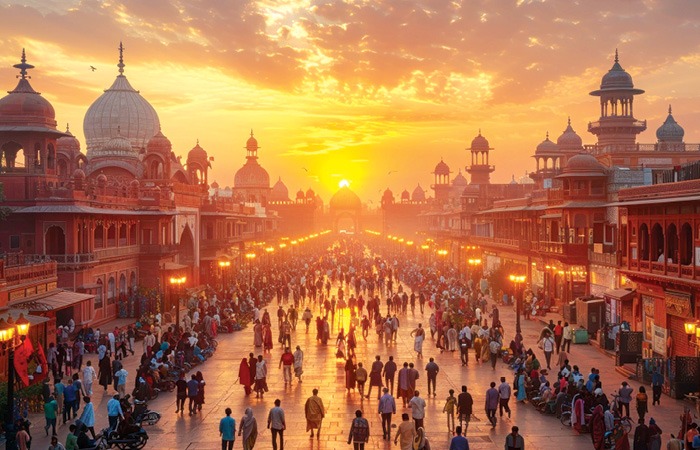
Follow WOWNEWS 24x7 on:
Updated: July 19, 2025 19:25

India’s spiritual tourism sector is undergoing a renaissance, blending ancient pilgrimage routes with modern wellness experiences. With a projected CAGR of 16 percent through 2030, the movement is reshaping travel, hospitality, and local economies across temple towns and urban retreats.
Key Highlights From the Spiritual Surge
- Footfall in destinations like Ayodhya, Varanasi, Tirupati, and Haridwar has more than doubled since 2022
- The Ram Mandir consecration in January 2024 catalyzed corporate participation, with brands like PVR INOX, Dabur, and ITC contributing to the event ecosystem
- Government schemes such as PRASAD, Swadesh Darshan, and HRIDAY are enhancing amenities and connectivity across spiritual circuits
- Gen Z and millennials are embracing “praycations” that combine temple visits with yoga, Ayurveda, and silence retreats
- Hospitality giants like Taj and Marriott are expanding into spiritual hubs, offering luxury stays with wellness packages and cultural immersion
Economic and Cultural Impact
- Spiritual tourism generated ₹1.34 lakh crore in revenue in 2022, with projections reaching ₹59 billion by 2028
- Over 140 million jobs are expected to be created by 2030, especially in states like Uttar Pradesh, Tamil Nadu, and Uttarakhand
- Retail sectors near pilgrimage sites are booming, selling puja essentials, local crafts, and wellness products
- Community-led tourism is gaining traction, balancing economic growth with cultural preservation and sustainability
Cultural Significance
India’s soul tourism boom is more than a trend—it’s a civilizational revival. As spiritual travel evolves into a holistic experience, it’s redefining how India connects with its heritage and the world.
Sources: Dream & Travel, Times of India, KPMG India, The Interview Times, Flextates Travel Blog


